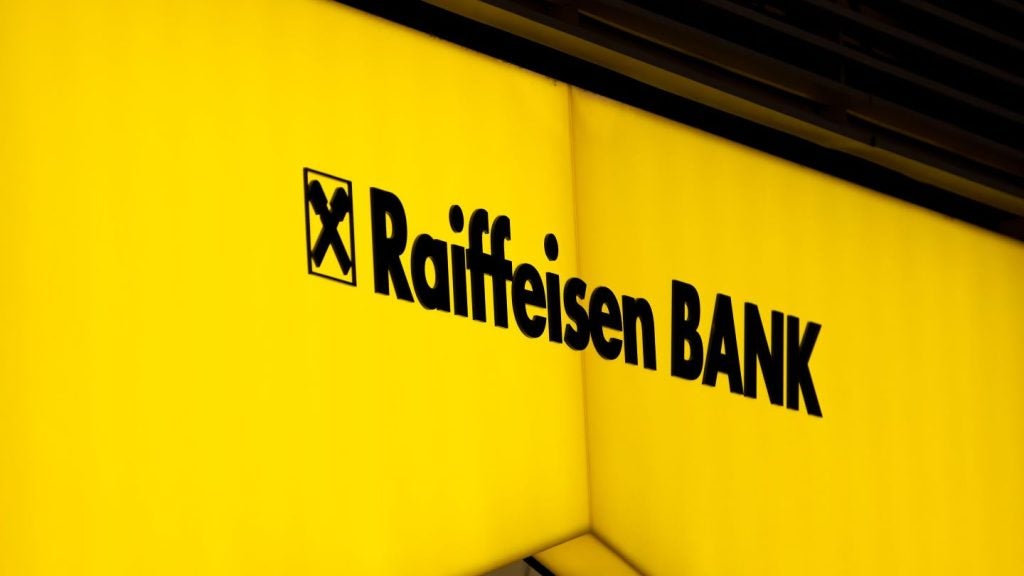
Technology is ever-changing, and as businesses struggle to keep up, asset finance has become a viable solution, with many firms turning to leasing to meet their needs. Saad Ahmed speaks to BNP Paribas, SocGen, Close Brothers, Grenke, Innovent, Investec and Lombard to determine the key trends
“That smartphone has more computer processing and storage than they had for the moon landings,” Duane Lent, chief executive officer of Innovent, tells Leasing Life.
“Technology continues to be developed that makes our previous understanding of technology obsolete.”
It is often said that the one constant is change. In the case of the flow of technology, this could not be clearer: Technology is always evolving. Moore’s Law, named for Intel co-founder Gordon Moore in 1965, posits that every three years the technical capabilities of a technology asset will double in complexity.
Clearly then, for a business, keeping up with this pace of change can be a challenge. But as businesses grow and develop, their requirements for technology also shift. In the face of rapidly encroaching obsolescence, and in order to expand business functions, the technology assets of a business must be upgraded or replaced.
Naturally, a company’s finances can only stretch so far. Leasing and asset finance has risen in the technology space to help firms level up without pulling the plug on their finances.
How well do you really know your competitors?
Access the most comprehensive Company Profiles on the market, powered by GlobalData. Save hours of research. Gain competitive edge.

Thank you!
Your download email will arrive shortly
Not ready to buy yet? Download a free sample
We are confident about the unique quality of our Company Profiles. However, we want you to make the most beneficial decision for your business, so we offer a free sample that you can download by submitting the below form
By GlobalDataLeasing Life spoke to a variety of lessors, seeking to uncover the leading trends in technology leasing as the Internet of Things (IoT) continues to emerge and shape the workplace.
Evolution of technology leasing
As asset finance offerings for technology have continued to develop and be offered more widely, both the types of asset, and types of business seeking them, have changed.
Keith Nowland, head of sales at Lombard Technology Services (LTS), tells Leasing Life that in just the past few years there has been a shift in demand for technology from traditional office-based companies to some sectors that may not seem to be immediately obvious candidates.
“If you asked me that a few years ago I I would have said mainly professional services and office-based and admin-heavy businesses,” he says. “Because our mandate has widened, technology takes a very wide range of assets into consideration.”
Nowland says that while traditional offices remain part of LTS’s client base, emerging interest from other industries means business type is slowly becoming less important.
“If I said that two or three of our biggest customers in LTS were construction companies, most people would probably be surprised,” he says. “But that is a fact. It really is a technology-based funding proposition, not just what I would call traditional IT.”
Investec Asset Finance has also seen a shift in the types of business it serves, according to head of sales Wesley Harfield. He says Investec has started to see interest from public sector organisations looking to plug their finances after years of austerity and reduced budgets.
“We fund across SMEs, corporates and partnerships; also the public sector who are increasingly looking at leasing as budgets are squeezed and it looks to try another form of funding to help fill that gap,” he says.
The other major change in technology leasing is, as Nowland mentions, the broadening of the concept. Rather than traditional monitors and hard drives, lessors fund a variety of technologies, including software. The proportion of asset finance for technology covering software has increased over the past few years – dramatically so in some cases.
“The proportion of software in any IT or technology product is significantly more than it was. If we are talking 10 years ago, it was probably 25% software, 75% hardware; it is now completely the other way round,” Nowland explains.
Though software is unusable without the underpinning hardware, software updates may be required more frequently than hardware, potentially at high cost. This technological development is what has spurred providers of asset finance for technology to look increasingly at software as the cornerstone of their propositions.
Raf Ramaekers, head of the technology solutions international business line at BNP Paribas Leasing Solutions, tells Leasing Life that vendors which traditionally offered hardware were shifting their efforts towards software.
“The value of software has been increasingly important for hardware vendors going through transformation plans. Vendors are acquiring software technologies and focusing their research and development on software, while shifting their offering towards software-based solutions and service,” he says.
John Rees, chief commercial officer at Société Générale Equipment Finance, believes this shift is due to changing costs. As the cost of hardware has risen, he argues, software has become more valuable.
Rees explains that, in this way, traditional asset finance for hard technology assets has declined in relevance as a more solutions-focused approach has been adopted.
“The unit cost of hardware has reduced substantially, which mathematically means software has more value. But more importantly, the emphasis has moved towards software and perhaps now moves again towards subscription and cloud solutions,” Rees says.
“Asset finance and leasing is less relevant in the sector as solution finance and cloud subscriptions become more important.”
Why choose leasing?
As technology continues to develop, businesses may find themselves with obsolete equipment but without the funds to upgrade. By choosing leasing, these businesses can upgrade without the process swallowing up funds.
Lena Kastner, investor relations at Grenke, tells Leasing Life that leasing also offers a number of other benefits for businesses: “The advantage to companies is that they have more flexibility, more independence and more planning security. An essential point for the UK market is the tax benefits they can use. Also, they profit from no cash-flow,” Kastner explains.
Ramaekers adds that flexibility is also a key factor in why businesses chose leasing. “Software and IT hardware are usually not core to the activity of the end user, but can be business-critical if not mission-critical,” he says.
“Customers are looking for the most cost-effective and efficient way to acquire their IT solutions. Leasing answers customer needs for flexibility by aligning costs with use and business demands, and avoiding the ownership risk.”
Ian McVicar, chief executive officer of Close Brothers Technology Services, says his business offers a wrap-around service.
“[We] manage the equipment during its life-cycle. As the new equipment is deployed, these days you have got to transfer data and information from the old equipment onto the new; data security is very important. So how is the data erased from it securely? And then how is any value recovered from that old equipment as well? We can assist our clients in all aspects of that.”
Another benefit of this seems to be disposal of equipment. If not tied into ownership, businesses can be freed of their obsolete technology assets and not bear the cost of their disposal.
McVicar says that as part of Close Brothers Technology Services’ offering, it manages the disposal of unwanted existing technology, as well as equipment it funds on lease once terms have finished.
The Waste Electrical and Electronic Equipment (WEEE) Directive is EU legislation that came into force in February 2013. It covers the disposal of end-of-life electrical equipment, and in one of its many revisions it was updated in 2008 to limit the use of certain hazardous chemicals.
McVicar says Close Brothers Technology Services removes the burden of disposal from lessees on these terms: “If it was a new client for us, and originally the equipment had been purchased for cash, the equipment might be three years old.
“Under the WEEE directive you have to dispose of that environmentally; you can not just put it in landfill. It needs to be broken down because it has corrosive elements,” he explains.
McVicar adds that if the technology has value as part of the secondary market or valuable for parts, rather than disposal, Close Brothers Technology Services offers to sell the equipment and potentially integrate the benefits from that into a new technology lease deal. “That would be part of the overall package,” he says.
Lease is the word
Increasing awareness among business of a lessor’s technology proposition and its benefits requires significant effort, but Harfield believes the leasing industry has not traditionally been effective at this.
“I do not think the leasing industry has been particularly brilliant in promoting itself in the past,” he says. “Although I think it maybe got a little bit better over the course of the past few years.”
Investec attracts business through third parties.“We work exclusively through third-party introducers; they are our origination engine,” Harfield says. “I guess it is raising general awareness that there are people out there like the broker community that we deal with who can offer these services to their clients.”
Harfield adds that there are lessons to be learned in the leasing industry from the way traditional banks raise awareness, and use former employees trained in the art to further their leasing services.
“If you look at the way in which a lot of the traditional high street banks have restructured their business and segmented their customer base, it is only the really big corporates who get a proper relationship manager.
“Over the course last few years, many high street banks have been reducing their local relationship management. Many of these relationship managers have been displaced or taken early retirement and then joined or established local brokerages, they are often very well-trained and well-versed in understanding their customers, their credit profiles, and what their underlying funding needs may be.
He adds; “They are effectively becoming the local relationship manager through a broker connection rather than through being part of a bank. It is about getting our message across to them, so that they can identify customers and we can fulfil their customers’ needs.”
Explaining how LTS promotes its offering, Nowland believes its ownership by RBS helps to increase the business’s reach.
“It’s quite fortunate that we’re part of a rather large bank. So we work very closely with our colleagues in the bank and Lombard Asset Finance, to make sure that everybody is aware within our own business of what we do and what we can do,” he says.
In addition to spreading the word within the company, Nowland says LTS has increased its sales personnel significantly.
“We have significantly grown our sales force in the last 18 months; it has doubled in size so we are getting the word out there,” he says. “Once we do good deals, we have case studies and testimonials. But the main route to market is working with our colleagues in the bank and Lombard, seeing customers every day.”
Establishing relationships with technology companies is another method by which lessors may release more information about their activities, and thus strengthen their customer base.
“SGEF has a strong vendor distribution model and this is the major way that we bring our products to market,” Rees tells Leasing Life. “We have deep relationships with the largest global software companies, and many leading technology providers.”
The next level
Generally, the evolution of technology has meant the products offered by lessors have become more dominated by software than hard assets such as laptops. However, within this change, the nature of the hardware and software has also moved on dramatically.
Whereas older hardware propositions were focused on supplying laptops or desktops, the majority have shifted to even more mobile assets, such as phones and tablets, and SIM plans for such devices.
Nowland explains that LTS has introduced a smartphone product into its technology lease proposition to service this trend, adding that this was spurred by a change in how people use technology in their private lives.
“Something that links very much into one of our new products is a significant shift in the corporate and business smartphone environment, so it is sort of following the consumer trend,” he explains.
“Initially, when you were trying to buy smartphones, you basically always used to buy a contract; a SIM-only contract was deep – you had to really search for it. Now that is very much a trend in the business environment as well.”
One major upcoming shift – and one that has already begun to get underway – is the IoT, which has been a buzzword for many years in the technology community. Simply put, the IoT refers to physical objects communicating with each other using internet infrastructure. This can range from a domestic refrigerator noticing there is no milk and ordering some, to a person telling a connected speaker to turn off the lights.
The IoT may have a recreational flavour in its early stages, but this is set to change. One area where businesses may seek to lease IoT-connected devices is manufacturing, and specifically at this point in time, in 3D printing.
More generally, as businesses increase internal collaboration, processes will need to go along with this, and the IoT can drive this forward.
“If there is more and more demand for different systems to be able to work together all of the time and talk to each other, that’s all part of the IoT,” says Nowland.
“3D printing, specifically, is one of the strands that we are really trying to develop our expertise in at the moment.
“We are making sure that we try to keep our expertise up on all the different technology assets that we deal with, because linking things together is going to become more and more prevalent over time,” he adds.
“I see it as a wrapper around what we are already doing, and it just helps drive the demand.”







